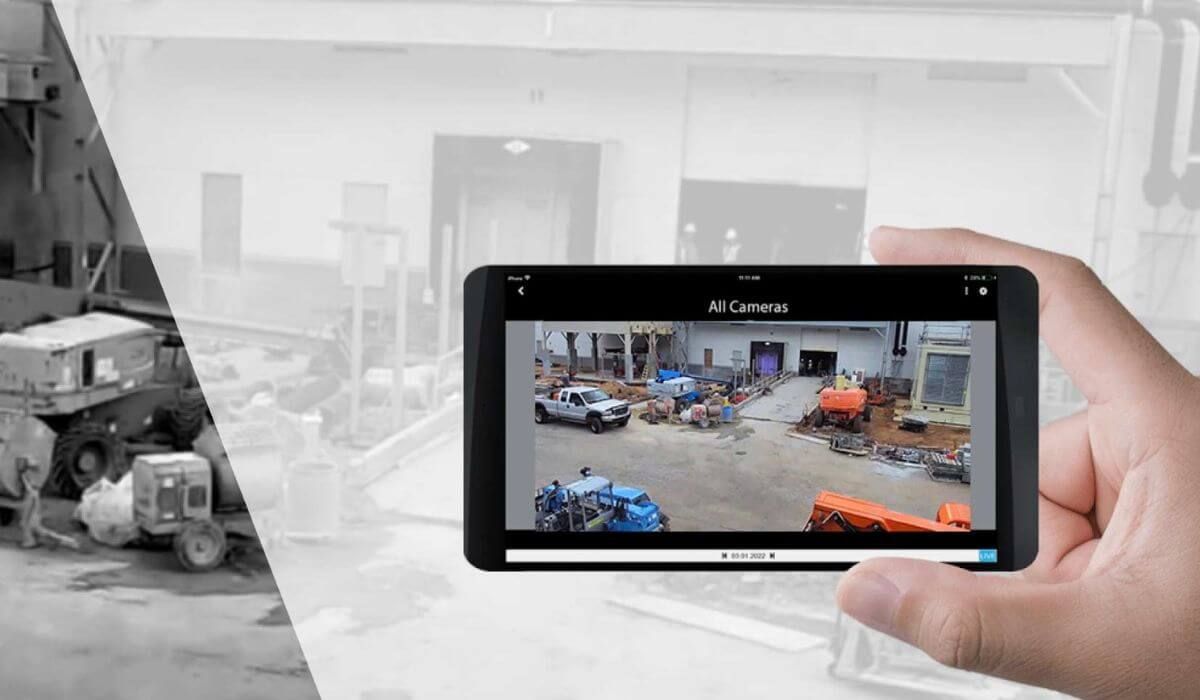Understanding What is Power Over Ethernet
Power over Ethernet (PoE) is a groundbreaking technology that streamlines the installation and operation of various devices by transmitting both electrical power and data over a single Ethernet cable. This innovation is particularly beneficial in security applications, where it simplifies infrastructure, reduces costs, and enhances system reliability.
As security needs grow, more Australians are turning to advanced technologies like PoE to enhance their home and business security. Let us, Scavi, guide you through the benefits of PoE in surveillance systems and how it can optimize your security setup.

What is Power over Ethernet (PoE)?
PoE enables Ethernet cables to carry electrical power alongside data to devices such as security cameras, access points, and VoIP phones. This eliminates the need for separate power supplies and outlets, allowing for more flexible and efficient installations. By using PoE, devices can receive power and communicate data through a single cable, reducing complexity and installation time.
How PoE works:
In a PoE setup, electrical current is introduced into the Ethernet cable at the power sourcing equipment (PSE) end—typically a PoE-enabled network switch or a PoE injector. This current travels alongside data through the cable to reach the powered device (PD), such as a security camera or access point. The PD is designed to receive both power and data over this single connection, eliminating the need for separate power supplies or outlets.
PoE operates by maintaining the electrical current separate from the data signals within the Ethernet cable, ensuring that power delivery does not interfere with data transmission. This separation is achieved through specific wiring techniques and components that allow simultaneous transmission without mutual interference.
By utilizing PoE, installations become more streamlined, reducing the complexity and cost associated with deploying networked devices, especially in locations where providing separate power sources would be challenging.
PoE Standards and Power Levels
PoE technology adheres to several IEEE standards, each defining different power levels:
- IEEE 802.3af (PoE): Provides up to 15.4 watts per port, suitable for devices like basic IP cameras and VoIP phones.
- IEEE 802.3at (PoE+): Delivers up to 30 watts per port, accommodating more advanced devices such as PTZ (Pan-Tilt-Zoom) cameras and video intercoms.
- IEEE 802.3bt (PoE++): Supplies up to 60 watts (Type 3) or 100 watts (Type 4) per port, ideal for high-power devices like advanced PTZ cameras and smart lighting systems.
Advantages of PoE in Security Systems
- Simplified Installation: PoE reduces the need for separate power cables, allowing for quicker and more flexible installations, especially in areas without existing electrical infrastructure.
- Cost-Effectiveness: By combining power and data transmission over a single cable, PoE decreases wiring and labor costs, making it a budget-friendly solution for expanding security networks.
- Enhanced Flexibility: PoE enables the placement of cameras in locations without nearby power outlets, offering greater flexibility in surveillance coverage. This is particularly beneficial in areas where installing separate power sources would be challenging or expensive.
- Centralized Power Management: PoE enables centralized control of power to devices, facilitating remote resets and monitoring, which enhances system reliability and simplifies maintenance.

Security Applications of PoE
PoE in Surveillance Systems
One of the most prominent applications of PoE is in surveillance. PoE simplifies the installation of security cameras by allowing both power and data to be transmitted over a single Ethernet cable, eliminating the need for separate power supplies and reducing wiring complexity. This setup not only streamlines the deployment process but also enhances the scalability of surveillance networks.
IP Security Cameras: PoE facilitates the deployment of high-definition IP cameras by providing both power and data connectivity through a single cable. This is particularly advantageous for installing cameras in locations without easy access to power outlets.
Network Video Recorders (NVRs): PoE-enabled NVRs can connect directly to PoE cameras, streamlining the setup process and reducing the need for additional power sources. This integration enhances the efficiency and scalability of surveillance systems.
Access Control Systems
PoE is also instrumental in access control systems, powering devices such as biometric readers, card readers, and intercoms. By utilizing PoE, these systems can be installed without the need for separate power sources, simplifying the infrastructure and reducing installation costs. Centralized power management through PoE ensures that access control devices remain operational during power outages, especially when integrated with uninterruptible power supplies (UPS).
Wireless Access Points
Deploying wireless access points (WAPs) using PoE facilitates the expansion of Wi-Fi networks without the constraint of locating power outlets. This is particularly beneficial in large areas where running separate power lines would be impractical. PoE-powered WAPs support the implementation of wireless security measures and enable secure remote access for monitoring purposes.
VoIP Communication
In the realm of communication, PoE powers Voice over Internet Protocol (VoIP) phones, ensuring reliable operation even during power disruptions. This reliability is crucial for security teams that depend on consistent communication channels. Additionally, PoE simplifies the deployment of VoIP systems by reducing the need for separate power adapters, leading to a cleaner and more organized workspace.
Considerations for Implementing PoE in Security Systems
- Power Requirements: Ensure that the PoE infrastructure can support the power demands of all connected devices, especially high-power cameras with features like pan-tilt-zoom (PTZ) or infrared illumination.
- Network Infrastructure: Utilize high-quality Ethernet cables and PoE switches to maintain signal integrity and support the necessary bandwidth for high-definition video transmission.
- Compatibility: Verify that all devices are PoE-compatible and adhere to relevant IEEE standards to ensure seamless integration and operation.
Conclusion
Power over Ethernet (PoE) has revolutionized the deployment of security systems by combining power and data transmission into a single, streamlined solution. Its advantages in simplifying installation, reducing costs, and enhancing system reliability make it an invaluable technology for modern security applications. As security needs evolve, adopting PoE can provide the flexibility and efficiency required to maintain robust and effective surveillance systems.
Take the next step in enhancing your security infrastructure by exploring Scavi's range of services and discovering how their solutions can be customized to meet your specific requirements.



